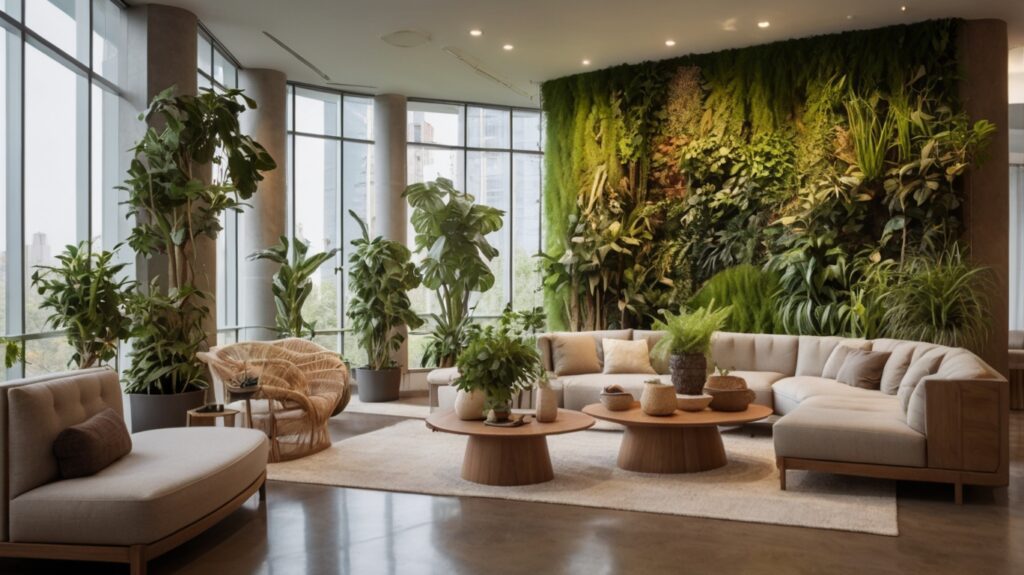Table of Contents
- Introduction
- What Is Biophilic Design?
- Key Elements of Biophilic Design
- Benefits of Biophilic Design
- How to Incorporate Biophilic Design
- Conclusion
- FAQs
Introduction
Biophilic design is revolutionizing modern interiors by bridging the gap between built environments and nature. This innovative approach integrates indoor plants, natural textures, and organic shapes to create healthier, more inspiring spaces. As urbanization grows, reconnecting with nature indoors has become essential for well-being and productivity.

What Is Biophilic Design?
Biophilic design is an architectural and interior design concept that emphasizes human connection with nature. Rooted in the term biophilia (love of nature), this trend incorporates natural elements into living and working spaces to enhance mental and physical health.
Key Elements of Biophilic Design
To effectively implement biophilic design, consider these core components:
- Indoor Plants – Improve air quality and add vibrancy.
- Natural Textures – Wood, stone, and woven materials evoke nature.
- Organic Shapes – Curved furniture and flowing layouts mimic natural forms.
- Natural Light – Maximize sunlight for a brighter, more open feel.
- Water Features – Fountains or aquariums introduce calming sounds.
Benefits of Biophilic Design
Adopting biophilic principles offers numerous advantages:
✅ Boosts Mental Well-being – Reduces stress and enhances mood.
✅ Improves Air Quality – Plants filter toxins and increase oxygen levels.
✅ Enhances Productivity – Nature-inspired spaces foster focus and creativity.
✅ Increases Aesthetic Appeal – Creates visually pleasing, harmonious interiors.
How to Incorporate Biophilic Design
- Add Greenery – Use low-maintenance plants like snake plants or pothos.
- Use Natural Materials – Opt for wooden furniture, jute rugs, or stone countertops.
- Maximize Natural Light – Install large windows or skylights.
- Incorporate Nature-Inspired Art – Landscapes or botanical prints reinforce the theme.
- Introduce Water Elements – Small tabletop fountains add tranquility.
Conclusion
Biophilic design transforms spaces by integrating indoor plants, natural textures, and organic shapes, fostering a deeper connection with nature. Whether in homes or offices, this trend enhances well-being, productivity, and aesthetic value. Embracing biophilic principles ensures a healthier, more inviting environment.
FAQs
1. What is the main goal of biophilic design?
The goal is to strengthen the human-nature connection within built environments, improving mental and physical health.
2. Which plants are best for biophilic design?
Low-maintenance options like snake plants, peace lilies, and succulents are ideal.
3. Can biophilic design work in small spaces?
Yes! Even small additions like hanging plants or natural wood accents make a difference.
4. Does biophilic design increase property value?
Yes, nature-inspired interiors are highly desirable and can boost real estate appeal.
5. How does biophilic design impact productivity?
Studies show that natural elements reduce stress and enhance focus, leading to better work performance.